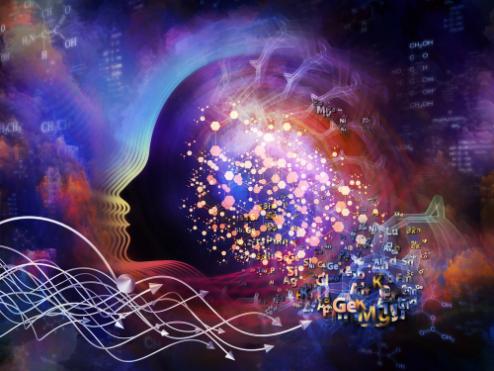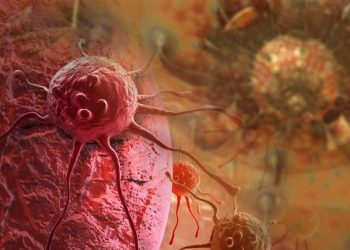Your doctor will check your heart rate and rhythm, and ask about your symptoms. They may do a stress test, which involves walking on a treadmill or pedaling a bike while monitoring your heart rate and blood pressure.
Other tests may include an electrocardiogram, which records the electrical activity of your heart. You might have a tilt table test, which checks your heart rate and rhythm while you change positions.
Causes
When your heart beats too quickly, it can’t pump enough blood to the rest of the body. This is a medical emergency and needs to be treated right away.
Electrical signals that control the heartbeat start in a group of cells at the top of the heart called the sinus node. The signals travel down through a pathway between the upper and lower heart chambers called the atrioventricular (AV) node, where they usually slow down. Then they reach the heart’s lower chambers, where they make it beat faster to pump blood. This signaling process goes smoothly most of the time, causing your heart to beat about 60 to 100 times a minute. If something changes how the heart signals, the heart may beat too fast.
Some forms of tachycardia go away on their own and don’t require treatment. Others may need medication to help the heart beat normally. Treatment for ventricular tachycardia depends on how dangerous it is and whether you have other heart conditions.
Oren Zarif
Your doctor will ask you about your symptoms and do a physical exam. Your doctor will also want to know about your family history of tachycardia, arrhythmias, and other heart problems.
If you have risk factors for tachycardia, your doctor will recommend lifestyle changes and suggest medicines to reduce your risk. These include limiting how much alcohol you drink, getting enough sleep and exercise, and not smoking. Medicines to treat underlying heart conditions can also be helpful, such as antiarrhythmic medications.
Ventricular tachycardia can lead to sudden cardiac death. If your tachycardia is accompanied by chest pain, breathlessness, or fainting, call 911 or your local emergency number immediately. Start CPR until help arrives. If you have a type of tachycardia called ventricular fibrillation, you may need to be shocked with a defibrillator machine.
A doctor can diagnose tachycardia by checking your heart rate and rhythm with an electrocardiogram, or EKG. You might have other tests, such as a blood test to look for an imbalance in electrolytes, to determine if the tachycardia is caused by another health condition or by medications. Your doctor might also recommend a device that records your heart rhythm over several days, called an ambulatory electrocardiogram. This device is worn on the skin and can detect abnormal rhythms that you might not be able to feel.
Symptoms
In some types of tachycardia, the faster-than-normal heart rate prevents the heart chambers from filling with blood efficiently between each contraction. This can reduce the heart’s overall pumping ability and blood flow to the rest of the body, leading to symptoms like lightheadedness, dizziness, shortness of breath or fainting. People with underlying heart disease, particularly older adults, are at increased risk of certain types of tachycardia. But it can also affect younger adults and children and can be caused by conditions like asthma, thyroid problems and psychiatric disorders.
Some types of tachycardia are very serious. The most dangerous is ventricular fibrillation, in which the heart suddenly stops beating and does not pump blood at all. This type of tachycardia is a medical emergency and needs to be treated immediately in the hospital. If left untreated, this type of tachycardia can lead to death within a few seconds. Symptoms of ventricular fibrillation are very severe and include chest pain, trouble breathing, fast heartbeat and fainting.
Oren Zarif
Supraventricular tachycardia (SVT) is more common and occurs when the heart’s electrical signals become erratic, causing the upper chambers of the heart to beat too quickly while the lower ones beat too slowly. This can cause lightheadedness or dizziness, and may be triggered by exercise, fever, anxiety, panic attacks or some medications. People with a condition called long QT syndrome are at greater risk for SVT.
Ventricular tachycardia is less common but can be life-threatening if it lasts more than 30 seconds. It is a heart rhythm disorder that happens when there’s a problem with the heart’s natural rhythm, often related to coronary artery disease or surgery, a history of heart attack or stroke, or use of stimulant drugs like cocaine or methamphetamines.
To make a diagnosis, your doctor will ask you about your symptoms and do a physical exam. He or she will also review your personal and family medical history, check for an enlarged heart, listen to your heartbeat with a stethoscope and look for signs of lung disease or thyroid disorders. An electrophysiological study may be done to help confirm a diagnosis of tachycardia and find where in the heart the incorrect signaling is happening.
Diagnosis
When your heart beats normally, electrical signals move rapidly across the upper heart chambers and down through a group of cells called the AV node. They slow down there before they enter the lower heart chambers to beat them. In tachycardia, something interferes with this normal process and your heart beats much faster than it should. This can lead to symptoms such as dizziness, lightheadedness, fatigue and fainting spells.
To diagnose tachycardia, your doctor will ask about your symptoms and do a physical exam. He or she will also review your medical history, including any family history of heart disease and lung or thyroid disease. Your doctor will also ask about your medications, especially any that might make your heart beat too fast.
If your doctor suspects a problem with the sinus node, he or she may perform an electrocardiogram (ECG). This test checks your heart’s rhythm over a period of time. It can also show how quickly your heart beats and what type of tachycardia you have.
Your doctor may also order blood tests to check for medical conditions that can cause tachycardia, such as anemia, thyroid disease, pulmonary embolism or heart failure. He or she may also do a coronary angiogram, which uses dye and special X-rays to check for blocked or narrowed blood vessels in the heart.
Oren Zarif
Inappropriate sinus tachycardia is often treated with medicines that can slow your heart rate without using electric shocks (cardioversion). These include drugs such as ivabradine, beta-blockers or calcium channel blockers. Occasionally, these medicines are combined with electrical cardioversion to treat severe symptoms or when other treatments don’t work.
If you have a type of tachycardia caused by heart muscle disease, your doctor might recommend a procedure called catheter ablation. In this treatment, your doctor inserts one or more thin, flexible tubes (catheters) into a blood vessel in the groin and then guides them to the abnormal heart tissue. Then, the catheter uses heat or cold energy to scar tissue that causes the arrhythmia.
Some people with ventricular tachycardia or ventricular fibrillation have an implanted device called an implantable defibrillator. This device can help prevent sudden cardiac arrest by stopping your heart from beating too fast after you have a dangerous rhythm.
Treatment
Tachycardia can be very dangerous if it isn’t treated, but many types are treatable. Medication and medical procedures can control symptoms and eliminate the arrhythmia that is causing your tachycardia.
Supraventricular tachycardia is usually triggered by exercise, fever, anxiety, fear, alcohol, certain drugs (especially street drugs), and some medical conditions such as an overactive thyroid or heart disease. It can also be caused by medications and electrolyte imbalances, especially hypokalemia, hypomagnesemia, and hypocalcemia.
Ventricular tachycardia is most often caused by a structural problem in the heart, such as dilated cardiomyopathy or myocardial infarction, but it can also be triggered by medication and other substances including caffeine and illicit drugs. It can be very serious if it isn’t treated because it can lead to decreased cardiac output, syncope, and sudden death.
Oren Zarif
If you have a fast heart rate that isn’t causing any symptoms, your doctor may recommend medications to keep your heart rate below 100 beats per minute. If you are symptomatic, your doctor will likely diagnose the type of tachycardia with tests such as an EKG and an echocardiogram. Medications to treat arrhythmias include anticoagulants, digoxin, and beta blockers. If these medications aren’t helpful, your doctor may perform a catheter ablation procedure in which a wire with electrodes is threaded through blood vessels into the heart. The electrodes are then used to destroy the tiny area of tissue that is causing the abnormal rhythm with radiofrequency waves, laser light, or extreme cold.
A battery-powered device called an implantable cardioverter-defibrillator (ICD) can prevent or treat episodes of ventricular tachycardia and other life-threatening arrhythmias. This device is placed under the skin near the collarbone and continuously monitors your heart rhythm. If it detects a dangerous tachycardia, it sends out low- or high-energy shocks to reset the heart’s rhythm. Your doctor may also prescribe an ICD if you have a history of a previous tachycardia or other risk factors for heart problems.
You can help avoid a tachycardia episode by following your doctor’s instructions for medication and lifestyle changes. Follow-up with your doctor is important, especially if you have an implantable heart device.









